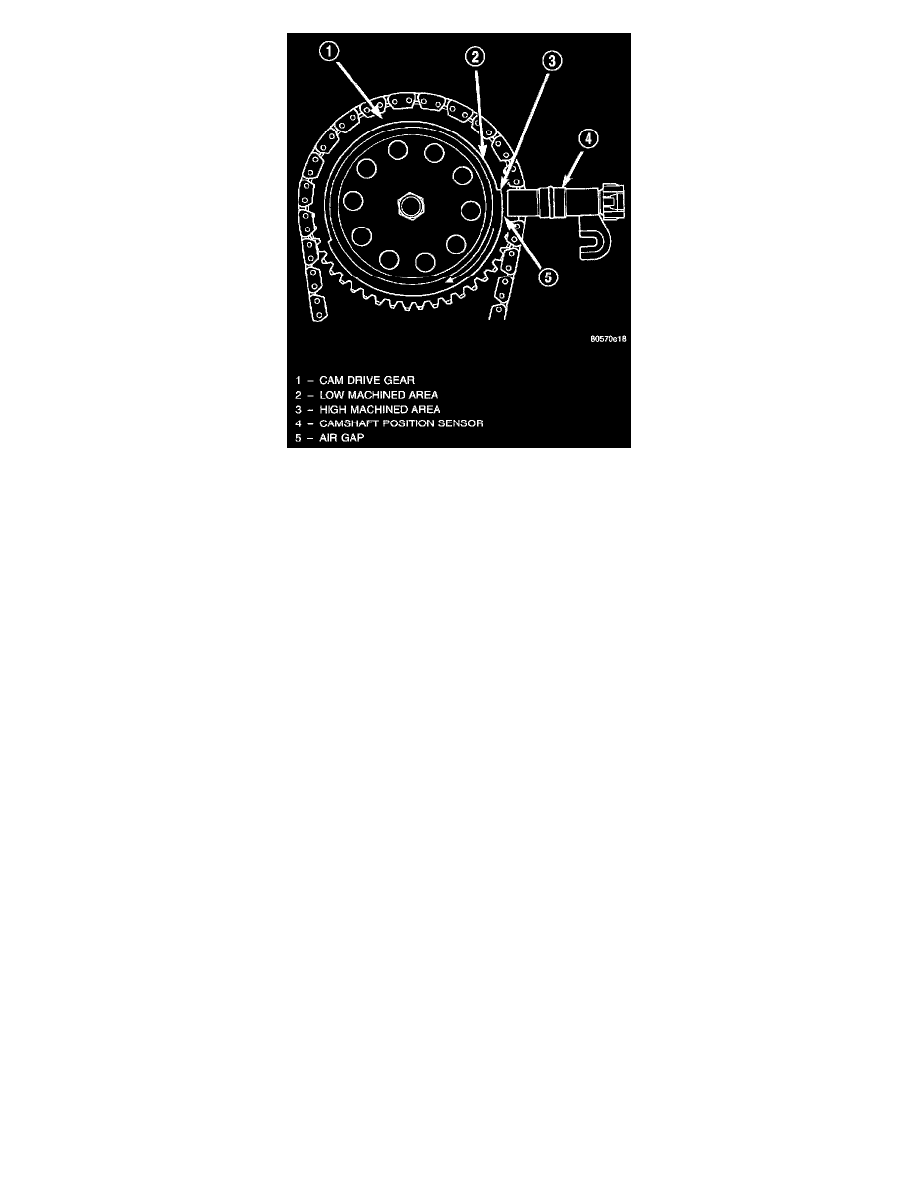RAM 3500 Truck 2WD V10-8.0L VIN W HDC (2000)

CMP Sensor Operation
A low and high area are machined into the camshaft drive gear. The sensor is positioned in the timing gear cover so that a small air gap exists
between the face of sensor and the high machined area of cam gear.
When the cam gear is rotating, the sensor Will detect the machined low area. Input voltage from the sensor to the PCM will then switch from a low
(approximately 0.3 volts) to a high (approximately 5 volts). When the sensor detects the high machined area, the input voltage switches back low
to approximately 0.3 volts.
IGNITION SWITCH AND KEY LOCK CYLINDER
The electrical ignition switch is located on the steering column. It is used as the main on/off switching device for most electrical components. The
mechanical key lock cylinder is used to engage/disengage the electrical ignition switch.
Vehicles equipped with an automatic transmission and a floor mounted shifter:
A cable is used to connect the interlock device in the steering column assembly, to the transmission floor shift lever. This interlock device is used
to lock the transmission shifter in the PARK position when the key lock cylinder is rotated to the LOCKED or ACCESSORY position. The
interlock device within the steering column is not serviceable. If repair is necessary, the steering column assembly must be replaced.
If the ignition key is difficult to rotate to or from the LOCK or ACCESSORY position, it may not be the fault of the key cylinder or the steering
column components. The brake transmission shift interlock cable may be out of adjustment.
Vehicles equipped with an automatic transmission and a steering column mounted shifter:
An interlock device is located within the steering column.
This interlock device is used to lock the transmission shifter in the PARK position when the key lock cylinder is in the LOCKED or ACCESSORY
position. If it is difficult to rotate the key to or from the LOCK or ACCESSORY position, the interlock device within the steering column may be
defective. This device is not serviceable. If repair is necessary, the steering column assembly must be replaced.
Vehicles equipped with a manual transmission, a floor mounted shifter, and a LEVER below the ignition key:
A lever is located on the steering column behind the ignition key lock cylinder. The lever must be manually operated to allow rotation of the
ignition key lock cylinder to the LOCK or ACCESSORY position. If it is difficult to rotate the key to the LOCK or ACCESSORY position, the
lever mechanism may be defective. This mechanism is not serviceable. If repair is necessary, the steering column assembly must be replaced.
Vehicles equipped with a manual transmission, a floor mounted shifter, and NO LEVER below the ignition key:
The ignition key cylinder must be depressed to allow it to be rotated into the LOCK or ACCESSORY position. If it is difficult to rotate the key to
the LOCK or ACCESSORY position, the lock mechanism within the steering column may be defective. This mechanism is not serviceable. If
repair is necessary, the steering column assembly must be replaced.
